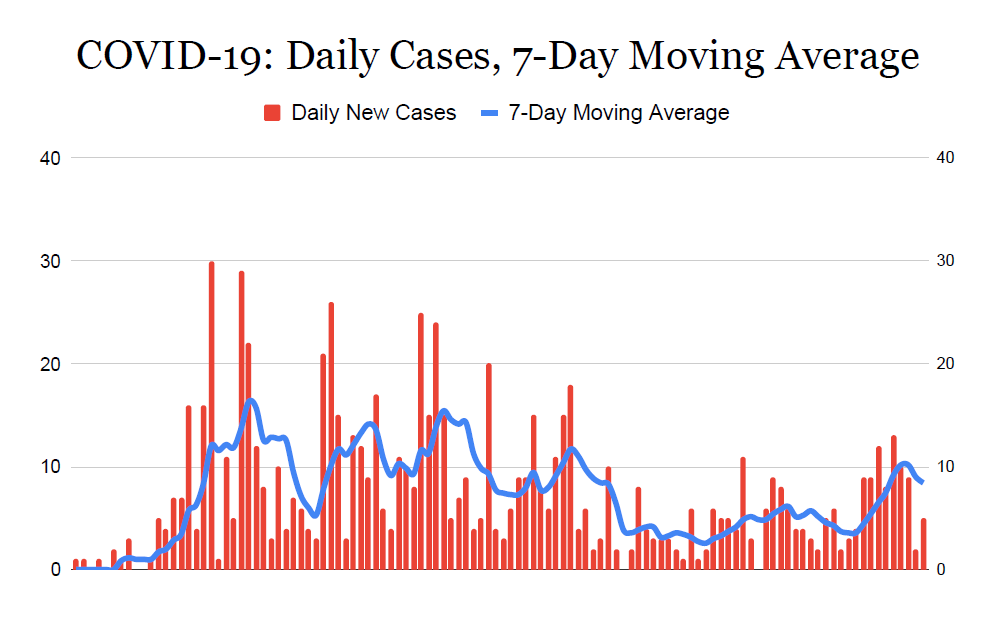COURT HOUSE – A 30-year-old Texas man thought the pandemic was a hoax. Reports are that the man, whose name was not released, deliberately attended a “COVID party” with a confirmed infected person, contracted the SARs-CoV-2 virus, and died at a Texas medical center.
There is no verification of this story told by a hospital doctor, but two things are certain: a man in his 30s died from COVID-19 infection, and many young people feel the virus, whether hoax or real, is not a serious enough threat to them to interrupt the party life of summer at the shore.
In the past week, in Cape May County, 126 cases of COVID-19 were confirmed by laboratory testing. Since July 1, that number is 248 new cases.
Two out of every three of those new cases were in a non-resident of the county, almost always one 30 years old or younger.
The intense focus of the news media on the death toll among the elderly during the pandemic created a false impression that the pandemic is no threat to those below 65, especially those well below 65.
Without a threat to their health to act as a deterrent to risky behavior, the young can only be controlled through the power of moral appeals, urging them to think of the damage they may do by spreading the virus to those more likely to experience serious complications.
Is this “it can’t hurt me attitude” based in fact? Are the young truly protected from the negative consequences of infection?
The mounting evidence suggests otherwise. The problem is getting past the media hype that allowed death to be the only arbiter of serious consequences.
Despite the case of the 30-year-old in Texas, the data supports the claim that the young seldom die from COVID-19. Centers for Disease Control and Prevention (CDC) statistics show that 82% of the deaths from the virus are in individuals 65 years of age or older. The other 18% of fatalities are almost exclusively in individuals over 40, who have not hit 65.
One can find examples of young people who died from the virus, but the cases are outliers. Young people, who have the natural sense of invincibility that goes with youth, are willing to play the odds.
Look at the data more closely and playing the odds can seem a riskier proposition than it does at first glance.
While those who die from COVID-19 are largely over 65 years old, only 35% of all the cases are in that age group and perhaps, more importantly, only 44% of the hospitalizations. In fact, CDC data shows that one in five of those hospitalized with COVID-19 complications is under the age of 40.
Another set of data for the year 2020 only shows that number increasing. Recently, 29% of hospitalizations are people under the age of 40.
Hospitalization percentages increase with age, so perhaps, again, the odds are still worth playing. Many of those in that under 40 group are probably closer to 40 than 20, or so the thinking goes. The threat of a large hospital bill may not be a sufficient deterrent.
The problem, again, is that the media is wedded to the mortality numbers and not reporting the almost daily announcements of new research findings of the long-term impact of COVID-19 infections.
The virus was initially called the novel coronavirus for a reason – it’s new. It is a virus people became aware of six months ago. Medical researchers are working daily to learn about its impact on the body.
Dr. Anthony Fauci, the nation’s top expert on infectious diseases, said he never experienced a virus like it, during his time as an infectious disease expert. Fauci’s voice, caught in the larger politicization of the pandemic, would carry less weight were it not for the large number of studies being announced almost daily on some new aspect of the virus’ behavior.
COVID-19 produces a multisystem attack on the human body. One University of Utah study announced days ago shows that inflammatory proteins produced during the COVID-19 infection alter blood palettes, making them “hyperactive” and more prone to form dangerous and potentially dangerous blood clots. Doctors expressed rising concern over blood clotting and resulting strokes in people in their 30s.
New Jersey has the second-highest number of Multisystem Inflammatory Syndrome in Children cases among the 50 states. To date, 51 cases of the syndrome affected mostly young children, but some as old as 18.
Damage to the heart, kidneys, and lungs was detected in numerous COVID-19 patients, with many of the difficulties surfacing months after the infection. One study, out of Great Britain, warns that even mild cases of initial COVID-19 infection may have long-term consequences.
It all adds up to the fact that many of the young individuals disregarding any sense of duty to others, may also be using the wrong information base when making their calculations of risk.
The 30-year-old Texas man who supposedly died after attending a COVID-19 party is reported to have said, “I thought it was a hoax, but it’s not.” The story does not have to be true to stand as a parable.
Proceed not just at great risk to others, but perhaps even at greater risk to oneself. Roll the dice now, then check back to see if one is a winner in six months.
To contact Vince Conti, email vconti@cmcherald.com.








